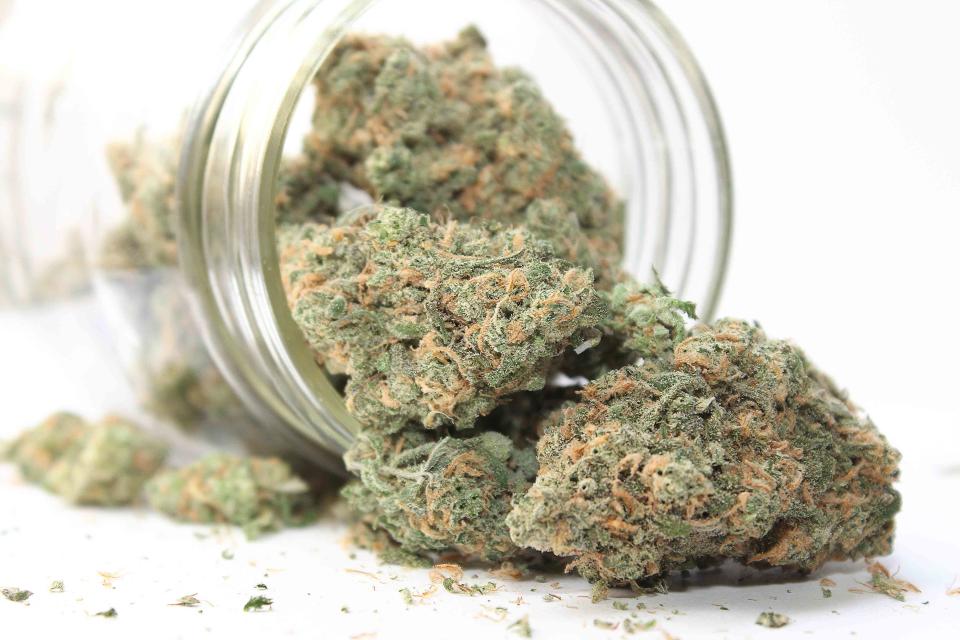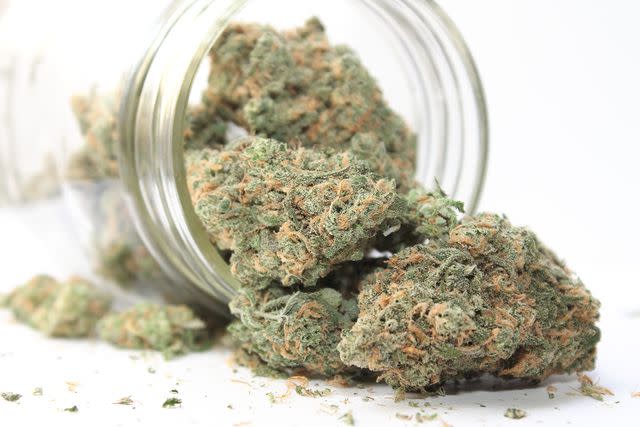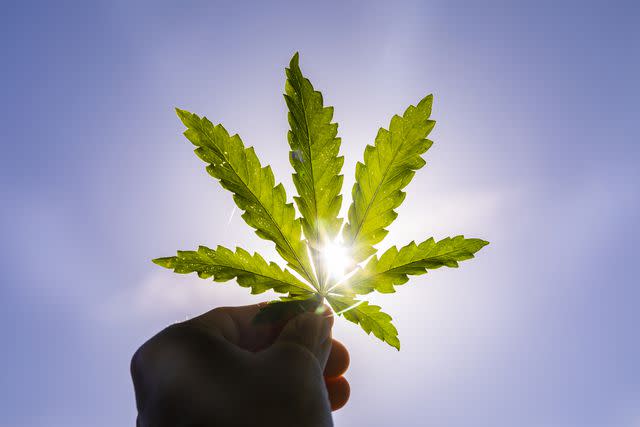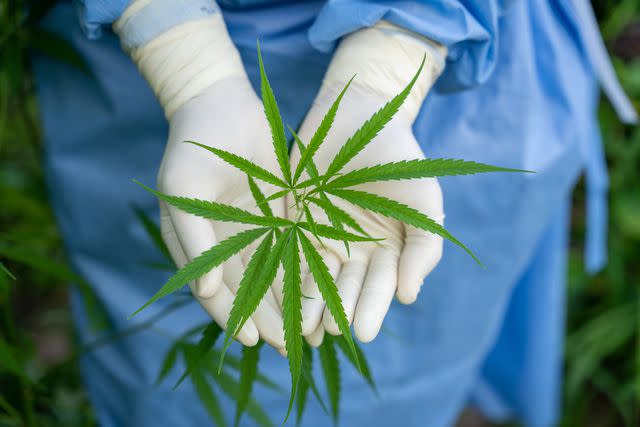Indica vs. Sativa: What's the Difference?
Comparing the two main species of marijuana plants

Fact checked by Zerah IsaacsMedically reviewed by Femi Aremu, PharmD
Indica and Sativa are the two main types of marijuana plants. Sativa (Cannabis sativa) is often said to be energizing, while Indica (Cannabis indica) is relaxing, but the reality is not that simple. The chemical makeup of both species can vary widely, and a plant's effects will depend on its particular composition, not its species.
Indica and Sativa plants are also crossbred to create hybrids. Hybrid strains contain a mix of qualities from their parent plants. Every strain is unique and affects individuals differently.
This article discusses the difference between Indica and Sativa. It explains the chemical and physical differences between Cannabis sativa and Cannabis indica plants and their various effects.

Physical Appearance
Growers can immediately tell the difference between indica and sativa plants just by looking at them—their physical differences are that obvious.
Indica plants are shorter. They usually grow up to 2 to 4 feet and are compactly branched, giving them a bushy appearance. Indica leaves are also broader.

Anton Petrus / Getty Images
Sativa plants grow taller than indica plants, with the ability to reach between 5 and 18 feet or more. Sativa leaves are thin and the plants have fewer branches.

Pramote Polyamate / Getty Images
Hybrids, created from the cross-breeding or cross-pollination of two different cannabis plants, can vary in appearance depending on the parent plants.
Composition
Delta-9-tetrahydrocannabinol (THC) and cannabidiol (CBD) are two compounds known to produce the effects of cannabis. These compounds, called cannabinoids, affect the brain differently.
CBD and THC work by interacting with the body's endocannabinoid system (ECS). The ECS is mainly responsible for maintaining homeostasis—the body's ability to maintain balance in internal processes like temperature, immune responses, and mood.
THC and CBD can be found in both Sativa and Indica plants. Though the content of each can vary in every individual plant, Sativa plants traditionally have produced more THC than CBD, while Indica plants have made more CBD than THC.
However, THC and CBD amounts within a plant species are not standard, and plants of both species are now grown to produce high levels of THC. The CBD and THC levels of hybrids can also vary depending on the plants used to create them. Hybridization is so common that the distinction between the species is often not clear-cut.
Because of this, some experts propose avoiding the terms Indica and Sativa altogether, or using them only as indicators of the plants' height, branching, and leaf size—not their effects.
CBD-to-THC Ratios
The amount of CBD and THC in a product or plant is often depicted as a ratio, or a comparison of the amount of one to that of the other. For example, a CBD-to-THC ratio of 1:1 means that there is an equal amount of CBD and THC in a given product or plant. A CBD-to-THC ratio of 15:1 means there is 15 times the amount of CBD than THC.
How They Work in the Body
THC is commonly known to produce a "high" with effects like sleepiness, euphoria, and impaired perception and movement. Studies also suggest that THC may be able to play a role in decreasing pain.
It's capable of causing such effects by binding to the following cannabinoid receptors found throughout the body:
CB1 receptors: CB1 receptors are highly abundant in the brain. These receptors help control many brain-related processes that influence factors like learning and memory, emotion, social behaviors, and balance. These are the main receptors that THC binds to, producing the "high" effect.
CB2 receptors: CB2 receptors are abundantly found in body tissues that play roles in immune function, such as the tonsils, spleen, and thymus. These receptors help promote homeostasis in the body by regulating inflammatory and immune responses. THC does bind to these receptors, although not as much as it does with CB1 receptors.
How CBD produces its effects is less understood. CBD is commonly known to decrease pain and inflammation, prevent seizures, and reduce symptoms of mental health disorders such as anxiety.
But CBD does so without the "high" experienced with THC, as CBD does not bind to either of the cannabinoid receptors mentioned. Instead, it's believed that CBD affects how THC binds with these receptors.
Research reveals that CBD seems to decrease THC's intoxicating effects and possibly allow more positive outcomes like decreased nausea.
It's also known that CBD interacts with other non-ECS receptors, enzymes, and cellular structures that influence factors like pain and inflammation. Some even propose that there may be a third unknown receptor that CBD binds to.
Although THC and CBD are the main compounds in Cannabis sativa and Cannabis indica, there are other cannabinoids and compounds within them that can contribute to their effects. Examples include cannabigerol (CBG) and terpenes. Research is ongoing to determine how much of an influence such substances possibly have.
How They Make You Feel
You may have heard that cannabis Sativa causes an uplifting and energetic feeling or "high," whereas Indica plants cause more of a relaxing feeling.
Sativa strains are commonly recommended for daytime use. They're claimed to be uplifting and cause more of a cerebral or head-high. Indica strains are usually recommended for relieving pain and insomnia. Often considered "bedtime strains," Indicas are said to have a calming effect on both the body and the mind.
However, the research behind these claims is limited.
Subjective results from a small Internet survey (95 research participants) put out by the Western University of Health Sciences may provide some insight into clinical differences between Indicas and Sativas. Here are some notable results from the survey of online marijuana users:
With respect to specific medical conditions, survey respondents felt that Indica helped with nonmigraine headaches, neuropathy, spasticity, seizures, joint pain, and glaucoma.
With respect to medical conditions, survey respondents expressed Sativa preference only for treating weight loss.
Online marijuana users expressed no difference between Indicas and Sativas when addressing HIV infection, migraines, multiple sclerosis, cancer, muscle pain, arthritis, fibromyalgia, trauma, orthopedic problems, and other painful conditions.
With respect to symptoms, respondents expressed Indica preference for pain management, help with sleep, help with sedation, and a "good high."
With respect to symptoms, respondents expressed a Sativa preference for enhancing energy.
Researchers concluded that Indicas were preferred when treating medical conditions, whereas Sativas were preferred for recreational use.
Keep in mind that the findings presented in this survey are intended only to provide food for thought. Much more research in this area is needed. Because of the lack of research, people tend to rely on the Internet, friends, or dispensary personnel to learn how a Sativa- or Indica-based product may make them feel.
Whatever you may hear, the effects can differ widely from one person to the next and can be influenced by factors such as dosage, tolerance, method of use, and added ingredients.
The CBD-to-THC ratio may also matter. Generally, it's known that products that are predominant and high in THC are more likely to cause an intoxicating "high." And there's some research suggesting that high doses of solely CBD (300 to 600 milligrams) may cause a calming effect.
But due to the many factors that can be of influence, it's difficult to know exactly how a cannabis product may make you feel without trying it.
Side Effects
Cannabis use may cause side effects that can differ from person to person. Cannabis products that are CBD-predominant may cause side effects such as:
Nausea
Fatigue
Anxiety
Dry mouth
Dizziness
Changes in appetite
Cannabis products that are THC-predominant can cause the same side effects as CBD-predominant products. But as THC specifically affects the brain, other effects can include:
Changes in mood
Altered senses
Impaired body movement
Hallucinations
Additionally, research suggests that early THC use (teenage years or younger) may impair the brain's development process in regard to functions like memory, thinking, and learning.
Note that the method of cannabis use can contribute to side effects. For example, smoking cannabis may lead to respiratory problems, while orally ingesting cannabis may increase the chance of unintentional poisoning.
Which Strain Has the Strongest Smell?
How strong cannabis smells has more to do with the age of the flower (bud) and how it is stored than the strain. Younger buds kept in airtight containers generally have the strongest smells. Sativa and Indica do have different scent profiles, however. Overall, Indica flower leans toward a muskier, skunk-like aroma, while Sativas tend to be a little sweeter with brighter notes.
How They Compare to Cannabis Ruderalis
Cannabis ruderalis, the third categorized species of cannabis, typically doesn't grow over 2 feet and is unbranched.
These plants are known to be autoflowering, meaning they have the ability to flower under any type of light. In contrast, sativa and indica plants are photoperiodic and typically need around 12 hours of light and 12 hours of darkness to flower.
Ruderalis plants are rarely grown by themselves. Instead, they're commonly cross-bred with other cannabis plants to produce hybrid plants with autoflowering capabilities.
Ruderalis plants typically contain very low levels of THC with reportedly higher CBD levels.
Many botanists grow hybrids to produce plants that have unique characteristics. For example, a botanist may cross-breed a ruderalis plant with a CBD-predominant indica plant so that the hybrid can have autoflowering capabilities and a high CBD profile.
Related: How Is Marijuana Used?
A Word From Verywell
If someone gives you advice on the effects of a Sativa or Indica cannabis product, know that their advice may be from their own experience or what someone may have told them. The effects of any cannabis product depend on different factors and can vary from one person to another.
If you are interested in a product that's marketed as being of the species Sativa or Indica, try getting specific data on its ingredients and the amount of CBD and THC within it for a possible idea of what effects you may experience.
Frequently Asked Questions
Is cannabis the same as marijuana?
Cannabis is the term used for the hundreds of plant species commonly categorized as Cannabis sativa, Cannabis indica, and Cannabis ruderalis. Marijuana is a term generally used to describe cannabis that is used recreationally, although "medical marijuana" is a widely accepted term for cannabis used for health reasons.
Why does weed smell like skunk?
Cannabis's signature scent is made up of a combination of various metabolites, terpenes, and volatile sulfur compounds that varies from strain to strain. Marijuana’s distinct skunk-like odor is due to a volatile sulfur compound known as 3-methyl-2-butene-1-thiol.

